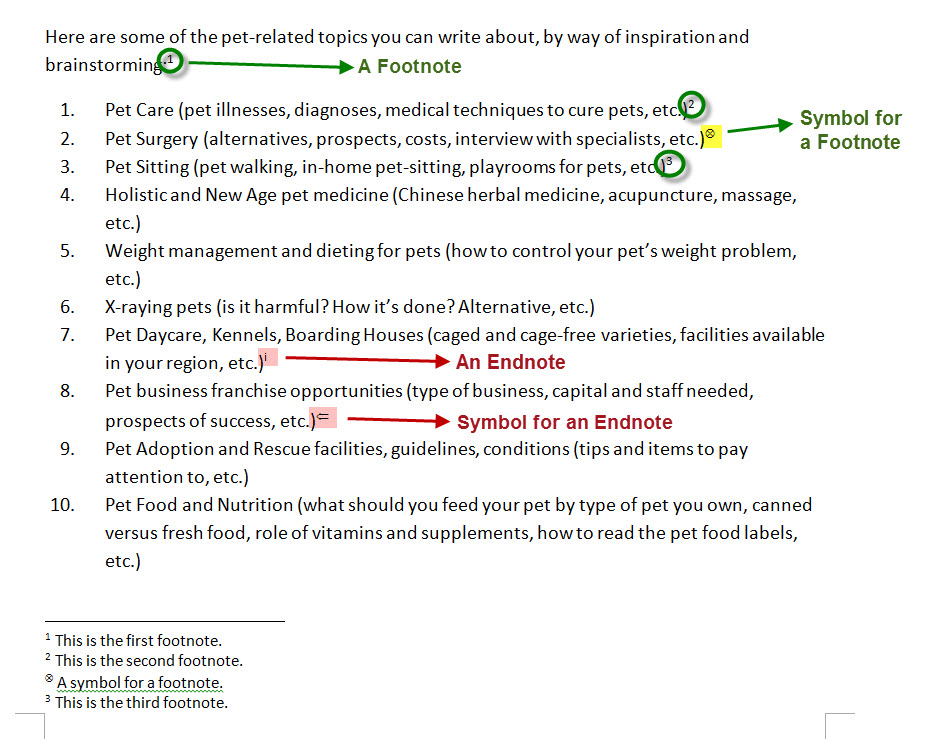

- Footnote vs endnote word full#
- Footnote vs endnote word Pc#
- Footnote vs endnote word series#
- Footnote vs endnote word mac#
f) Well Done! The number would be better placed at the end of the sentence. d) Oh Dear! This number is correctly placed.
Footnote vs endnote word full#
d) Well Done! The number follows the full stop at the end of the sentence. b) Oh Dear! This number is correctly placed! c) Yes! The number would be better placed after the quote, and -remember - before the dash! c) No! Put the number after the quote, and in this case, before the dash. b) Well Done! This number is correctly placed. a) Oh dear! Always place the note number after punctuation, and not after the author's name. 5Ī BMA report published in 2004 described Neville as 'dangerously obsessed' 6 by sausages.Ī) Well Done! The note number should be placed at the end of the sentence, and after the full stop.

Neville's research methods have been criticised by the British Medical Association, as they have led to twenty second-year students becoming seriously obese. It has been argued that it is impossible to reproduce Mrs Brown's special sausage recipe under modern hygeine conditions. Neville's description of the perfect sausage 3 - one that is 'crunchy but not crispy' - has become the basis for subsequent scholarship. In a recent piece of research, Neville has demonstrated that sausages are always best when cooked slowly in the Aga. The 'perfect sausage' was first described by Brown 1 in 1787. In which of these sentences are the note numbers correctly placed? In his ' Sausages Are Not the Only Meat', Brown set out what has now become the standard definition of 'the perfect sausage' 1 - though not without causing a degree of consternation among scholars.ġ James Brown, Sausages Are Not the Only Meat (Cumberland: Pork Press, 1995), pp. 78-90.Ģ Harry Neville, Breakfast Bangers (London: Brown, 2005), pp. 2ġ John Butcher, The Perfect Sausage: From Pigsty to Plate (Cumberland: Pork Press, 1990), pp. 1 However, Neville has recently produced conclusive evidence to the contrary. It has long been argued that pork and leek sausages are better than pork and apple. Notes should always end with a full stop. When citing quoted sources, the number should be placed at the end of the quotation and not after the author's name if that appears first in the text. Numbers should, however, be placed before a dash. Numbers should follow punctuation, and preferably be placed at the end of a sentence. Do not use the same number more than once to refer the reader to an earlier note. Notes should be numbered sequentially (1,2,3 etc). It should be possible to read the entire piece of work without having to refer to a footnote for anything other than references. Footnotes should never be used as a means of getting round word limits by including information or argument in them that should be in the main text. Other material should, as far as possible, be included in the text. Notes should include the minimum information necessary for a reader to find and consult your source. Whether a source is quoted directly or indirectly, paraphrased or summarised, it must be acknowledged with a footnote or endnote.
Footnote vs endnote word series#
In a book-length piece, a new series of notes should begin with each chapter.Įvery time the ideas, facts or opinions of another are used in a piece of work it must be acknowledged with a full reference. Endnotes all appear at the end of the document. A footnote appears at the bottom of the page that contains its reference number. The only difference between the two is where they appear in the document. You can choose between footnotes and endnotes, numbering format, custom marks and symbols, a starting number, and whether to apply the numbering to the whole document.In the MHRA system, references to sources used in your work are set out in full in notes, either at the bottom of each page (footnotes) or at the end of the piece of work (endnotes). Word is capable of generating both footnotes and endnotes.
Footnote vs endnote word mac#
To make global changes to the footnotes on the Mac after you have entered them:
Footnote vs endnote word Pc#
Windows PC keyboard shortcuts for footnotes and endnotes are: Keyboard Shortcuts for Footnotes and Endnotes The process works both ways convert an endnote by right-clicking the endnote text and clicking Convert to Footnote. The full notes are typed out at the bottom of the pages oftext (footnotes) or in a series of pages following the text of the paper (.


 0 kommentar(er)
0 kommentar(er)
